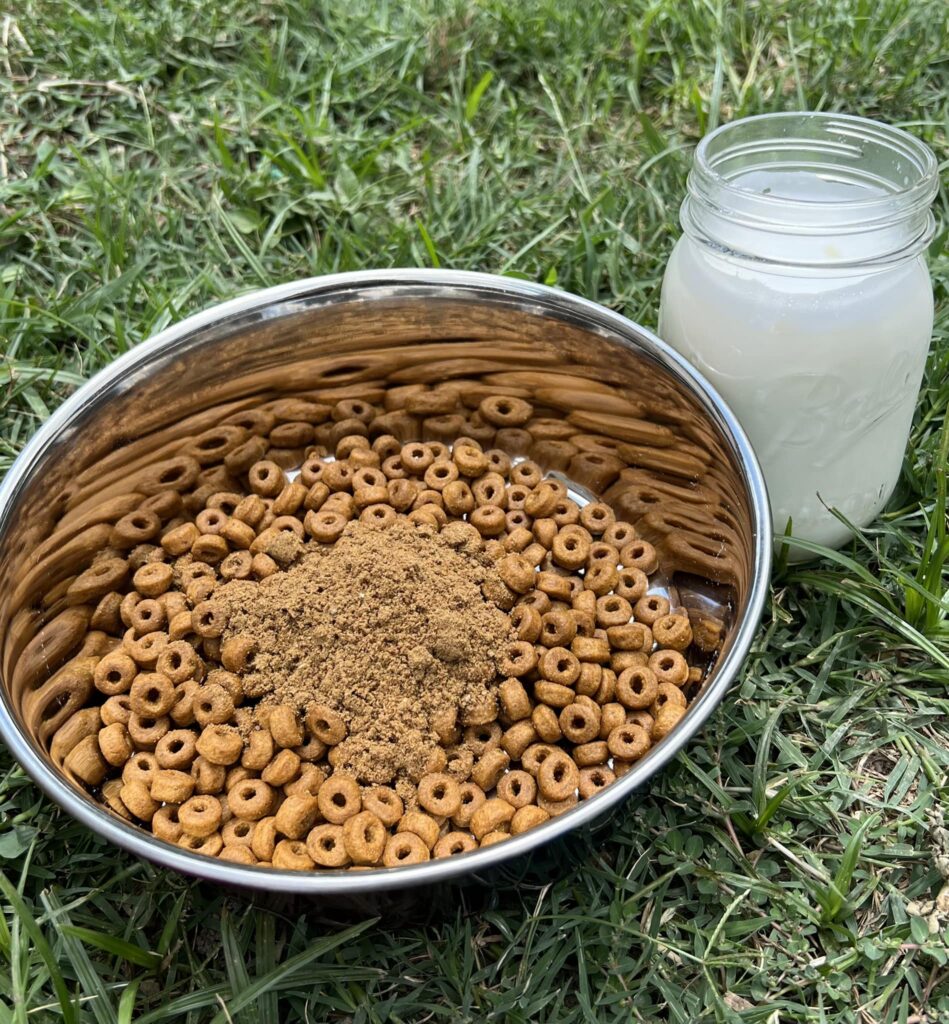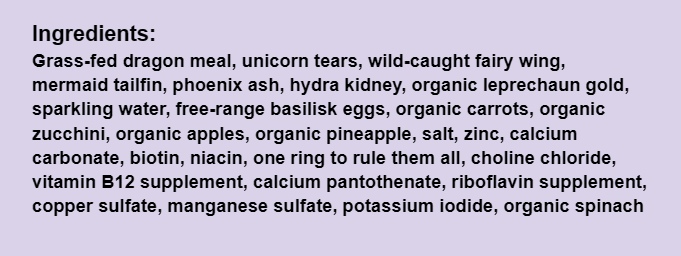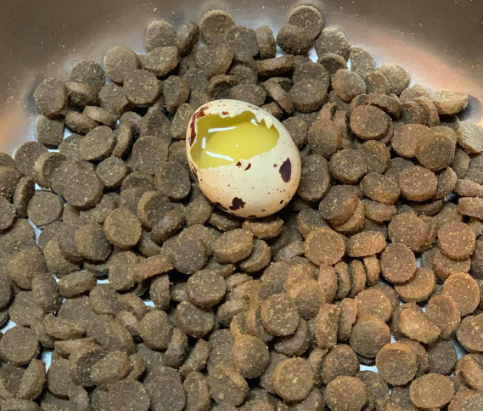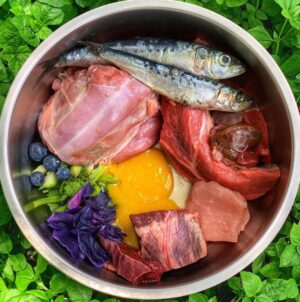
Most days, as I scroll social media, I find myself practically bombarded with posts from dog owners questioning how they should be feeding their dogs. Many of these posts are looking for very black and white answers to dog nutrition with questions ranging from “What exact percentages should I be looking for?” and “How can I figure out the exact amounts of certain ingredients in a kibble?” A lot of times I see posts that are simply blocks of ingredients lists asking if a food is “quality.” It’s overwhelming, and I really don’t blame people. The pet food market is absolutely oversaturated with every time of product you can think of and just about every brand tries to bring up points that paint their competitors in a negative light.
Am I Overthinking?
I would say that the answer to this question is both yes and no. I do think that most people are overthinking their dog’s food but I also think that the majority of people do not focus on the right things. I completely blame this on today’s extremely confusing marketing in the pet food space. People want the best for their pets and the information that exists online can be contradicted no matter where you look.
A Red Herring: Ingredients Lists
For the last nearly two decades, there has been a huge focus on reading ingredients lists and I find this to be the biggest frustration when discussing dog food. I don’t want to say that ingredients don’t matter, because to an extent, they do. However, they don’t matter in the way people are using them. First, ingredients lists tell us nothing about the quality of the food we’re feeding. This is something we need to deprogram if someone wants to make the most ideal choices for their dog.
As you’re browsing pet food labels, you might be tempted to pick out the formula with the most attractive ingredients lists. These foods are marketed to be as pleasing to the human eye as possible. Seeing ingredients such as fresh meats, whole fruits and vegetables, and even herbs might make you think you’re choosing the best possible diet for your dog.

The best example of this being a fallacy is the Midwestern PetFoods recall from back in 2021. Midwestern manufactures several higher end pet foods with extremely attractive ingredients panels. They also used to use their lack of recalls over decades as a huge marketing point so pet owners would always assume their products were safe. Unfortunately, their lapse in quality control resulted in the deaths of 120 dogs and around 220 illnesses.
Instances like these are why I implore people to not judge their dog food by ingredients alone. In fact, ingredients are the last thing I look at.
When Do Ingredients Matter?
While ingredients do not tell the whole story, I do think we can infer some small things from them. Mostly, I think we can use ingredients to clue us in on how knowledgeable the company is on actual dog nutrition. I’ve listed a few personal “red flag” ingredients below:
- Flaxseed: While I do not totally avoid flaxseed, I am extremely wary of companies that appear to be using it as a sole source of omega 3 fatty acids. Flaxseed is a source of ALA, which dogs cannot optimally convert into EPA and DHA. This article goes into more detail about the detriments of using flaxseed as a sole source of omega 3s.
- Pumpkin Seeds: Pumpkin seeds are commonly used as a source of manganese by certain raw food companies. While they could be of some benefit, dogs cannot absorb manganese from seeds in an optimal manner. This causes formulas to look good on paper, but a dog’s actual ability to absorb the nutrient listed is hindered by the source.
- Peas: Peas have been a hot topic since the 2018 DCM announcement put out by the FDA. While a definitive connection between peas and other legumes to DCM has not been found, I avoid them out of an abundance of caution due to studies such as this one. Peas are also thought to affect fertility in female dogs, so many breeders tend to avoid them anyway.
Any company can put together a list of ingredients and math it out to reach AAFCO minimums. However, it takes real expertise to put together ingredients in a way that is most beneficial to the dog. In my opinion, many companies fall short in terms of expertise.
What Should I Be Focusing On?
Not nearly enough people put focus into manufacturing like they should. Your dog’s food could have the prettiest ingredients list in the world, but that doesn’t matter in the slightest if the product is not well-made and, most importantly, safe. There are a handful of very popular foods out there that I am shocked people are willing to feed their dogs due to poor quality check track records from sickening and/or killing pets to sickening human infants.
Your chosen pet food brand, at the very least, should have a reputation for excellent manufacturing. That does not mean zero recalls. Recalls either mean quality checks are working, or they aren’t. What I mean by this is you need to be looking into the context of past recalls. The company that recalled a couple lots due to an issue they found through routine checks is completely different from a company whose issues had to be found by a separate entity like the Department of Agriculture.
I have listed some companies here who I believe to have top tier manufacturing practices. These are solely my opinion and are, of course, not an all-inclusive list. There are many great manufacturers out there.
What If I’m Overwhelmed?
We’ve all been there. In the end I believe there are some very simple guidelines you can follow to choose the best food for your dog. These assume that you are feeding a generally healthy dog with no special dietary requirements.
- Read the AAFCO statement. (If you are in Europe, you will want to look for an FEDIAF statement). The food you feed should be complete and balanced based on a standard. This ensures that your dog is getting a product that is nutritionally balanced.
- Avoid kibble brands that do not use synthetic vitamins/minerals. This one is quite controversial, however from a nutritional standpoint it is impossible to formulate a kibble without supplementation. You cannot do it through whole foods alone despite claims from certain companies. This goes back to what I spoke about with the pumpkin seeds above. Just because it looks good on paper, does not mean it’s optimally bioavailable to your dog. Claiming to derive zinc through spinach or other plant sources is another great example of this. Dogs cannot properly absorb zinc from plant ingredients.
- Don’t overlook those older tried and true brands. There is a reason many of these brands have been around for decades. Online rumors and misinformation have put them in a negative light, however, you should not fear foods that millions of dogs have successfully thrived on for many years. Remember, when it comes to pet food marketing, there needs to be an enemy for brands to paint in a negative light in order to move people onto their brand. It has always been like this and sadly, it will always be like this.
- Price does not decide quality. You do not need to go broke to feed your dog. I see so many instances of people who are guilted into feeding their dogs beyond their means under the illusion they’re helping their dog live longer and healthier. There are many quality brands out there that are also easier on the wallet. You can feed your dog well on a budget, always.
What About Toppers? Doesn’t My Dog Need Fresh Food?
I am the last person to fault someone for wanting to dress up their dog’s bowl with fun additions. I do it myself quite often. However, if you are not in a spot to do this all the time, there really is no need to. Your dog’s kibble will provide ample nutrition as it is and honestly, I think toppers are often overdone to the point where it can be detrimental.

That being said, if you want to add something fresh to your kibble that’s actually beneficial I highly recommend eggs. You can add them raw or give them a quick scramble. Cooking the egg actually increases its digestibility so if you have the time this is definitely the best way to go. Eggs are a protein source with a near perfect ratio of amino acids, so you can add one without worrying about throwing off certain nutrients. Just be sure to be mindful of calories if you have a dog that gains weight easily.
Seriously Though, What Do I Feed?
At the end of the day, the average pet population does best on a diet with a healthy balance of protein, fat, and carbs. There is a dangerous trend of pet parents being told that their dogs should not be eating carbs. However, carbs are a very safe form of energy. Excessive protein can be taxing on the kidneys long term and excessive fat can be taxing on the pancreas along with the risks associated with weight gain. Carbs have the lowest amount of calories by weight out of the three macros.
Dogs burn energy from carbs first, protein second, and fat third. If you are feeding a dog that does a lot of sprint-based sports such as agility or dock diving, you will want to feed a food with a more moderate level of carbs. This is where your bursty energy comes from. If you are feeding a dog that does endurance-based sports such as long-distance mushing, search and rescue, etc. you want to feed a food that has higher fat than average.
Your active pet should not need a 30/20 sport food unless holding weight is an issue. Many people try to make the diet fit the pet based on their own wants. Your kibble of choice should fit your pet first and foremost. Whichever diet your dog does best on is the correct diet.

